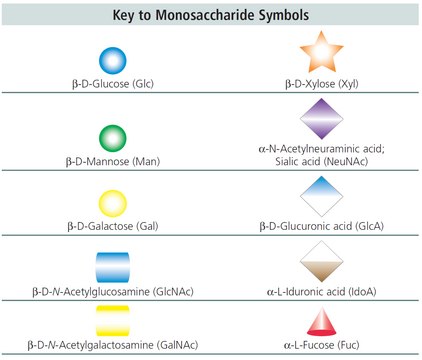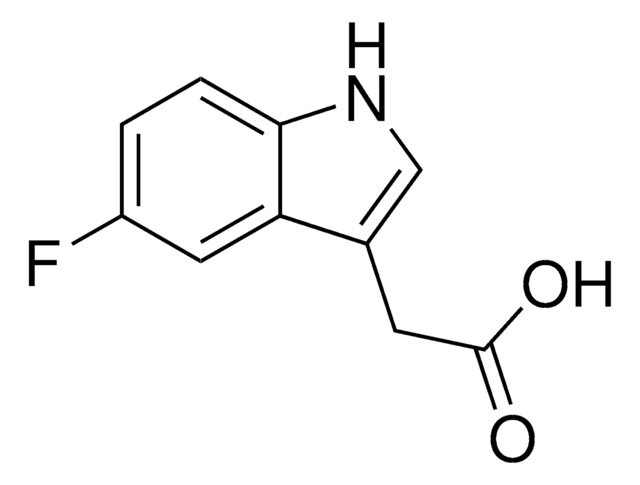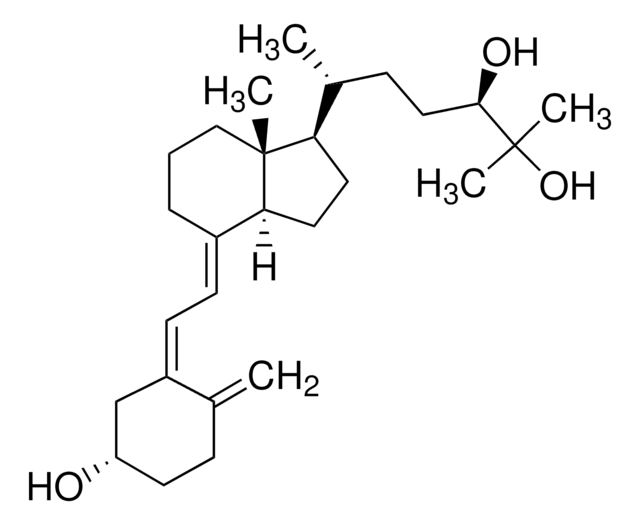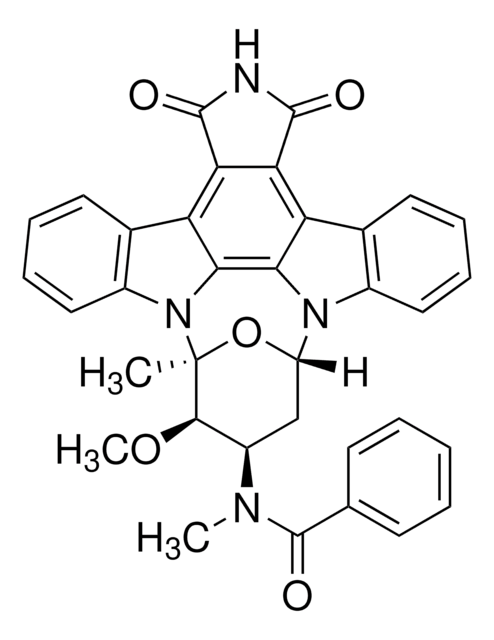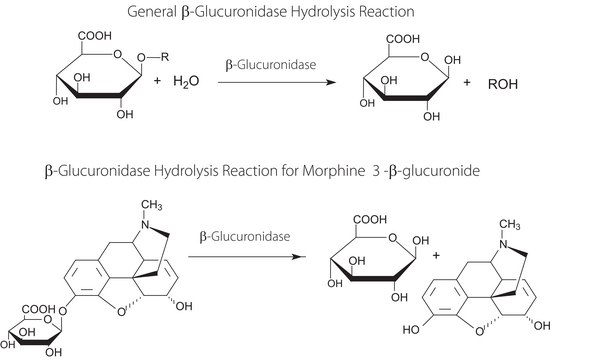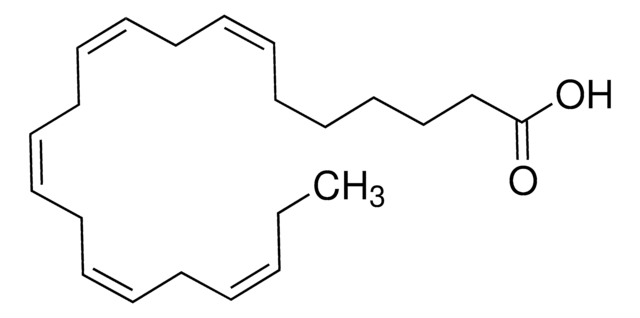19608
Thiocellobiose
≥98.0% (TLC)
Synonym(s):
4-S-β-D-glucopyranosyl-4-thio-D-glucose
Sign Into View Organizational & Contract Pricing
All Photos(1)
About This Item
Empirical Formula (Hill Notation):
C12H22O10S
CAS Number:
Molecular Weight:
358.36
MDL number:
UNSPSC Code:
12352201
PubChem Substance ID:
NACRES:
NA.25
Recommended Products
Assay
≥98.0% (TLC)
form
solid
technique(s)
thin layer chromatography (TLC): suitable
storage temp.
−20°C
SMILES string
OC[C@@H](O)[C@@H](S[C@@H]1O[C@H](CO)[C@@H](O)[C@H](O)[C@H]1O)[C@H](O)[C@@H](O)C=O
InChI
1S/C12H22O10S/c13-1-4(16)7(18)11(5(17)2-14)23-12-10(21)9(20)8(19)6(3-15)22-12/h1,4-12,14-21H,2-3H2/t4-,5+,6+,7+,8+,9-,10+,11+,12-/m0/s1
InChI key
VMEDEPBFFWJMMG-WELRSGGNSA-N
Application
Thiocellobiose is a glucose disaccharide linked via a β(1-4) thioether bond. Thiocellobiose is a cellulase inducer and inhibitor useful to identify, differentiate and characterize cellobiose-active β-glucosidase(s). Thiocellobiose is also used as a substrate to identify, differentiate and characterize cellobiose dehydrogenase(s).
Packaging
Bottomless glass bottle. Contents are inside inserted fused cone.
Other Notes
To gain a comprehensive understanding of our extensive range of Disaccharides for your research, we encourage you to visit our Carbohydrates Category page.
Storage Class Code
13 - Non Combustible Solids
WGK
WGK 3
Flash Point(F)
Not applicable
Flash Point(C)
Not applicable
Personal Protective Equipment
dust mask type N95 (US), Eyeshields, Gloves
Choose from one of the most recent versions:
Already Own This Product?
Find documentation for the products that you have recently purchased in the Document Library.
Pablo Isorna et al.
Journal of molecular biology, 371(5), 1204-1218 (2007-06-26)
Bacteria species involved in degradation of cellulosic substrates produce a variety of enzymes for processing related compounds along the hydrolytic pathway. Paenibacillus polymyxa encodes two homologous beta-glucosidases, BglA and BglB, presenting different quaternary structures and substrate specificities. We previously reported
E Montero et al.
FEBS letters, 421(3), 243-248 (1998-02-19)
The conformation of 4-thiocellobiose bound to beta-glucosidase from Streptomyces sp. has been studied by 1H-NMR transferred nuclear Overhauser effect spectroscopy (TR-NOE). Thiocellobiose behaves as an inhibitor of this glucosidase when cellobiose is used as substrate. NOE measurements and molecular mechanics
G Henriksson et al.
Biochimica et biophysica acta, 1383(1), 48-54 (1998-04-18)
Substrate structural mapping suggests that the catalytic site of cellobiose dehydrogenase from Phanerochaete chrysosporium forms a narrow cave with two hexose binding subsites. Kinetic data also show that beta-di or oligosaccharides are favored electron donors with respect to both KM
Meera E Atreya et al.
Biotechnology and bioengineering, 113(2), 330-338 (2015-08-25)
Enzymes that degrade cellulose into glucose are one of the most expensive components of processes for converting cellulosic biomass to fuels and chemicals. Cellulase enzyme Cel7A is the most abundant enzyme naturally employed by fungi to depolymerize cellulose, and like
U Baminger et al.
Applied and environmental microbiology, 67(4), 1766-1774 (2001-04-03)
Cellobiose dehydrogenase (CDH) is an extracellular hemoflavoenzyme produced by several wood-degrading fungi. In the presence of a suitable electron acceptor, e.g., 2,6-dichloro-indophenol (DCIP), cytochrome c, or metal ions, CDH oxidizes cellobiose to cellobionolactone. The phytopathogenic fungus Sclerotium rolfsii (teleomorph: Athelia
Our team of scientists has experience in all areas of research including Life Science, Material Science, Chemical Synthesis, Chromatography, Analytical and many others.
Contact Technical Service
